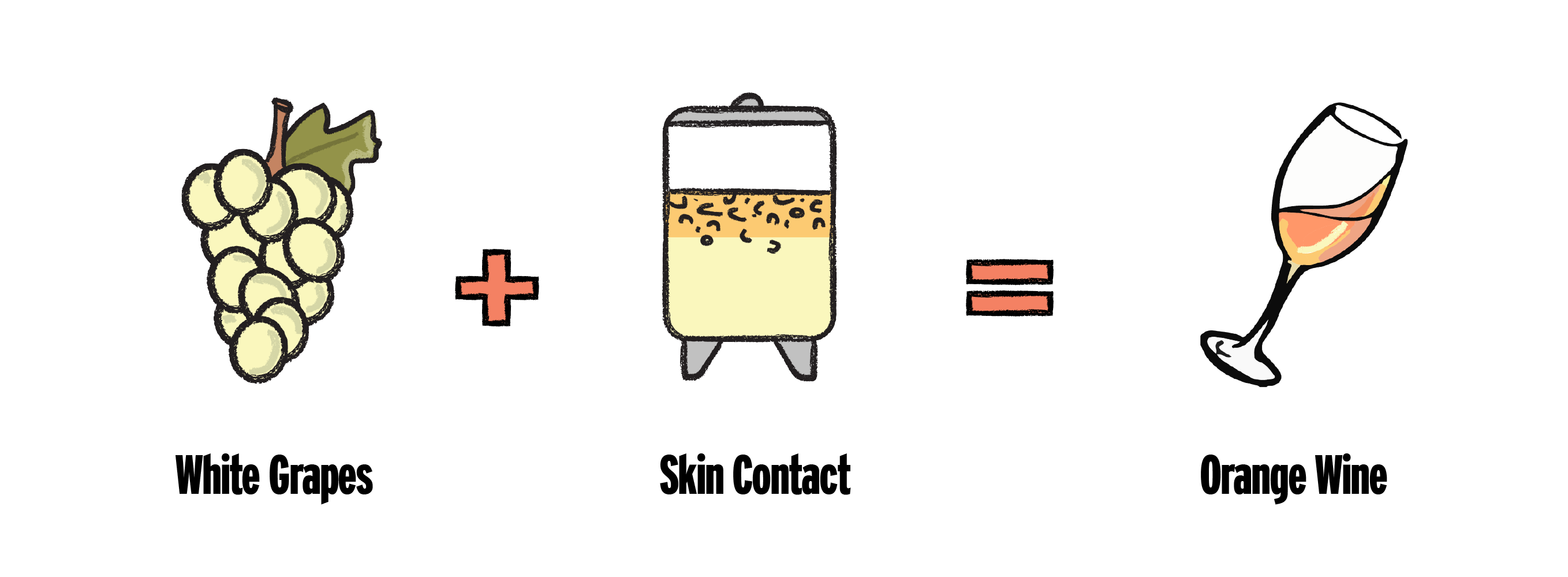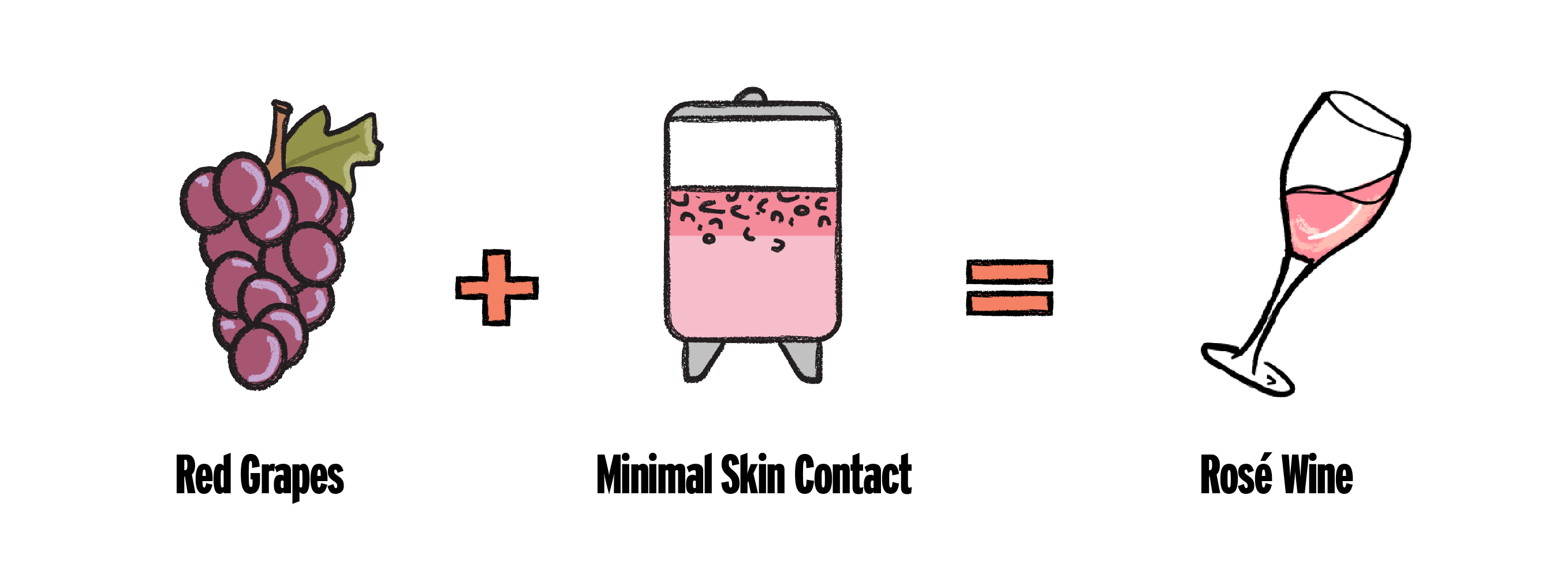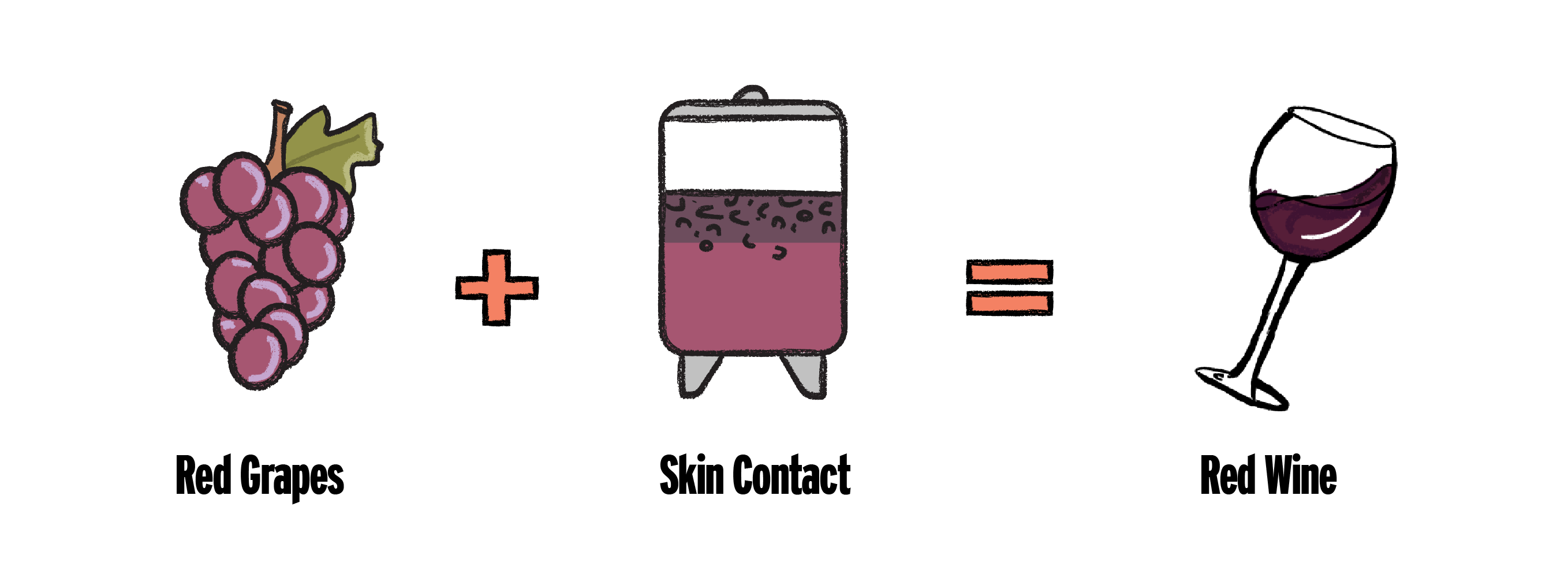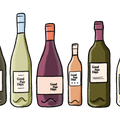

An ancient process that's back in fashion!
Orange wine, skin contact wine, amber wine, macerated wine... what is it?--red
You've heard the chatter, it's the hottest thing in wine bars across the globe, but what is this mysterious wonder? A helpful wine-related mathematical equation might help explain things, with the knowledge that colour in wine comes from the skin of the grape. So....
white grape + skin contact = orange wine

white grape + no skin contact = white wine

red grape + minimal skin contact = rosé wine

red grape + skin contact = red wine

So what is skin contact?--aromatic
It's simply the process of letting the juice (that is extracted from the grapes) hang out with the left over skin of the grape!
Imagine you crush a grape to get all the delicious juice inside. What's left (the squished grape) still has plenty of flavour, acidity and other compounds in it. By soaking these skins in the juice, you can gently extract the extra colour and flavour.
This is not a new thing. Thousands of years ago, before people said they only drink Pinot Gris and the like, pretty much all white wines would've been made with some degree of skin contact. In fact in Georgia, a country with a long and fabled history of winemaking, the traditional way to make white wine still involves skin contact! They go a little crazy on it, breaking it down into 'golden' and 'amber' wines, depending how long the skin contact goes on for.
What do these wines taste like?--racy
It helps if you imagine them as a cross between a red and a white wine, given their texture and power. The ageing with the skins draws out additional tannin, so the wines can often have a bit of grip or a touch of bitterness to them.
The flavour profile can also tend towards a riper, more tropical kind of spectrum (dependant on the grape variety of course), but it's common to see flavours and aromas of peach, apricot and pineapple, as well as orange blossom, beeswax and honey. They often have a slight saltiness to them, that works further enhances their food-friendliness.

When/How to drink them?--vegan
Again, there's going to be some differences based on what grape variety the wine is made from, and just how orange the wine is, but from our experience there tends to be two main styles of orange wine - the fruity, aromatic ones and the more savoury, grippy ones.
The fruit-forward wines can be enjoyed anytime - picnics, cocktail hour, as an aperitif before a meal, or over a light lunch.
The more serious ones are best at the dining table, perhaps with richer fish dishes or white meats (pork and turkey both work well). They also riff nicely with mild spices, so think cumin, cloves, peppercorns etc and you're on the right track. Don't forget these wines can pack a bit of tannin, so don't be afraid to use them where you might otherwise serve a red wine.

About the Author
Banjo Harris Plane is the three-time winner Sommelier of the Year Australia and a certified advanced Sommelier through the Court of Master Sommeliers. He first cut his teeth in the wine industry working as a sommelier in Australia's best restaurants, before starting multiple businesses in the space of a few years... these included two restaurants, a wine import business and co-founding Good Pair Days!
Do you know your wine personality? If your answer is no, take our quiz to find out which wines to pick up next and build your box!
Build my box





